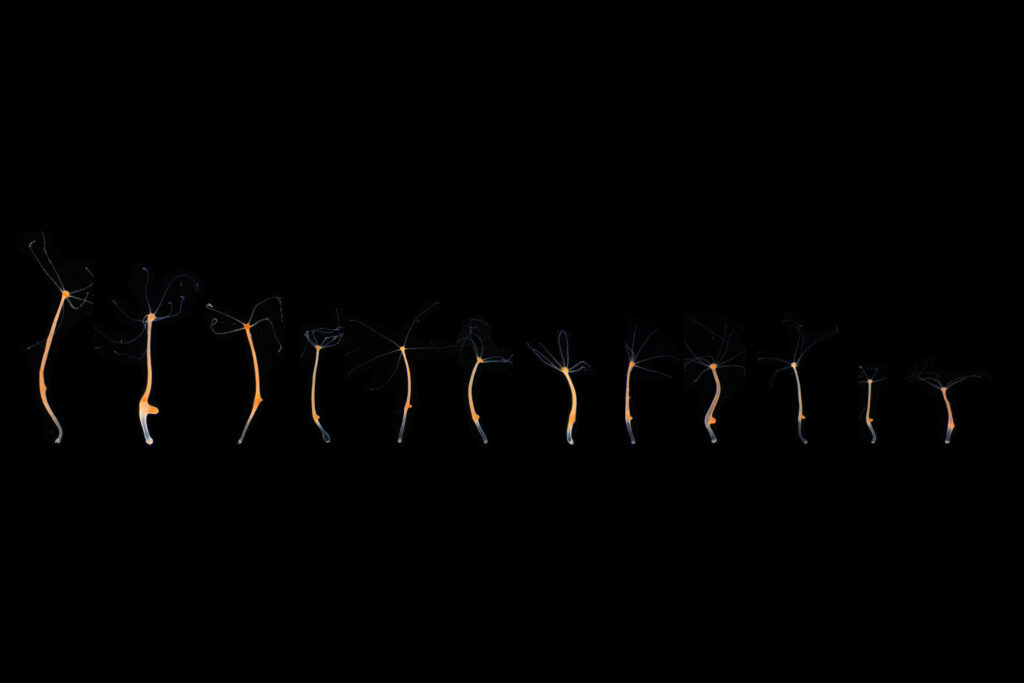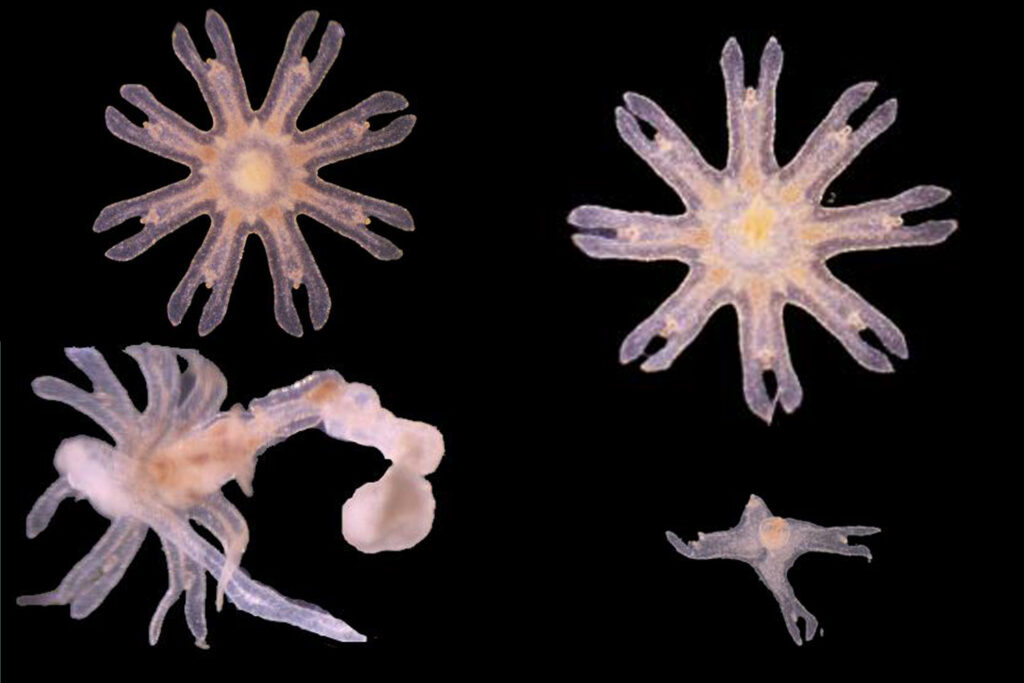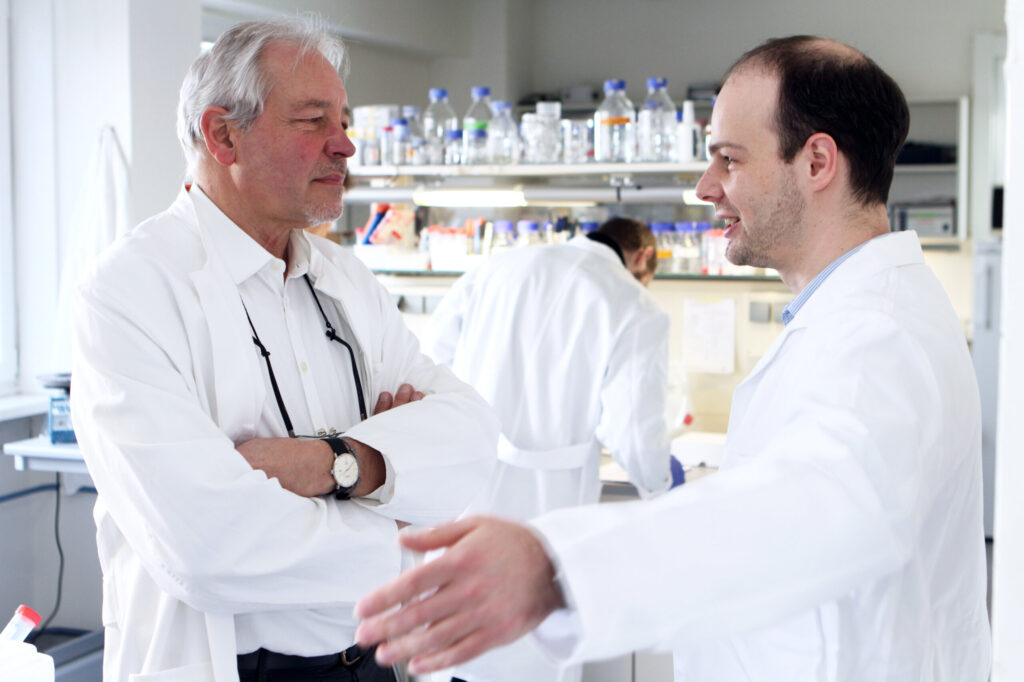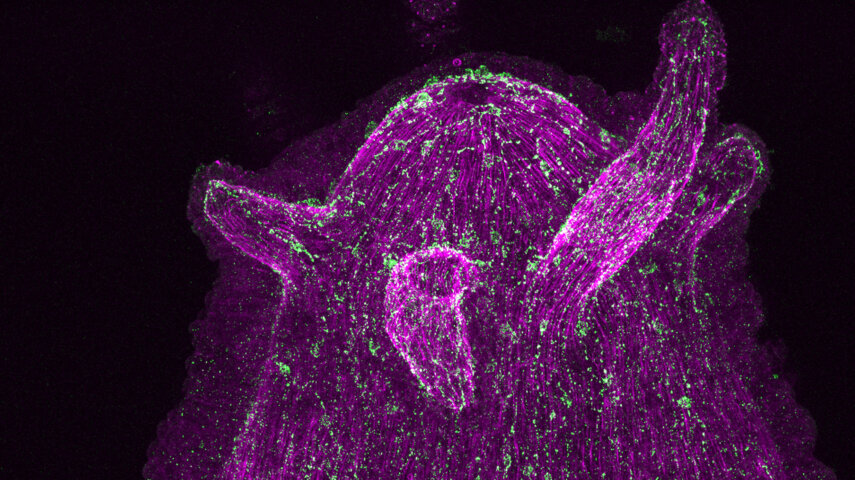Why are we different sizes?
Kiel research team describes the interplay of environmental factors and internal regulation in determining the growth of an organism
The body size of a living creature has a direct impact on its fitness – from the simplest animal and plant organisms right up to human beings. The individual size or height is therefore an important criterion for the ability of an organism to succeed in the competition for resources or reproduction. We basically assume that there is similar genetic information within a species, which in theory should lead to relatively uniform body sizes. However, within specific physiological limits, the individuals of most species grow to very different sizes – thus size must also be dependent on other factors. But precisely which parameters regulate growth at the molecular level has hardly been investigated to date. Now, scientists from the Zoological Institute at Kiel University (CAU) have been able to show how environmental factors and internal regulatory processes jointly control body growth, using the example of the freshwater polyp Hydra. The Kiel researchers demonstrated that the ambient temperature activates specific molecular signalling pathways of the growth process, and is thus involved in determining size. In addition, they showed that genetic factors also utilise identical signal pathways, likewise contributing to size regulation in the cnidarians. The Kiel research team recently published their new findings in the renowned scientific journal Nature Communications.
Interplay of environmental and internal regulation
From a cellular biological perspective, the size of a fully-grown organism is the result of three variables: the duration of its growth, the absolute number of the resulting cells and the individual size of all these cells, which together make up the mature organism. In the course of this characteristic growth process, the organism must be able to measure its current size, and the attainment of its maximum size. In their study, the CAU researchers initially focused on the regulation of the number of cells of the cnidarian Hydra.
“We observed that Hydra produces up to 83 percent more cells at low ambient temperatures,” explained Dr Jan Taubenheim, whose doctoral research in the field of cellular and developmental biology was incorporated in the current publication. “We also managed to identify the specific molecular signalling pathways which implement the influence of the temperature on the number of cells, and thus produce larger animals at cooler temperatures,” emphasised Taubenheim, who is now a research associate at the Heinrich Heine University Düsseldorf. These so-called Wnt and TGF-beta signals are involved, for example, in embryonic development and cell differentiation. Their interaction with the ambient temperature and growth in size was previously unknown. “The Wnt signals also determine the transition from growth to a stationary phase in Hydra. Therefore, we suspect that they serve the organism as a measuring instrument to determine its own size, before it stops growing,” said Dr Benedikt Mortzfeld, who also obtained his doctorate in cellular biology at the CAU, and is currently employed as a research scientist at the University of Massachusetts Medical School in Worcester.
The influence of genes
In addition to the ambient temperature, certain genetic information also contribute to size regulation in cnidarians. Genes that are responsible for the so-called insulin signalling pathway jointly determine the growth, among other things by controlling the number of cells during the growth phase. In a functional gene analysis, the Kiel research team was also able to show that switching off the genes responsible for this signalling pathway led to body sizes up to 41 percent smaller in the polyps. Thus, an important role in the cellular regulation processes of growth is also played by the genetic information. “Environmental factors and genetic factors take effect one after another in a multi-step process, in a fixed hierarchical sequence, and rely on the same cellular regulatory mechanisms,” summarised Professor Thomas Bosch, spokesperson of the CAU Collaborative Research Centre (CRC) 1182 “Origin and Function of Metaorganisms”. “Thus they together control cell number and size as well as the duration of the growth phase, and through their interplay facilitate great variability, which results in very different body sizes of the adult organisms,” continued Bosch.
Size regulation – a common principle?
The new findings on regulating size growth in the model organism Hydra contribute towards identifying universal principles in multicellular organisms. Certain similarities in the signalling pathways lead the researchers to suspect that different organisms incorporate the influences of environment and genetics in a very similar way in their internal size regulation. The next important step will be to also investigate the influence of bacterial colonisation of the body on the underlying control processes. “We suspect that the symbiotic microorganisms of the body are also inextricably linked with the regulation of individual development and thus growth in size of an organism,” said Bosch. In future, the scientists want to examine this possible involvement more closely in the framework of the CRC 1182, in order to gain a better understanding of size regulation in organisms, summarised Bosch.
Original publication:
Benedikt M. Mortzfeld*, Jan Taubenheim*, Alexander V. Klimovich, Sebastian Fraune, Philip Rosenstiel & Thomas C. G. Bosch (2019): Temperature and insulin signaling regulate body size in Hydra by the Wnt and TGF-beta pathways. Nature Communications Published on 22 July 2019
DOI: 10.1038/s41467-019-11136-6
*Authors contributed equally
A photo is available for download at:
www.uni-kiel.de/de/pressemitteilungen/2019/261-mortzfeld-ncomms.jpg
Caption: Some specimens of the cnidarian Hydra demonstrating the effects of environmental factors and internal regulation on body growth.
© Dr. Benedikt Mortzfeld
Contact:
Prof. Thomas Bosch,
Zoological Institute, Kiel University
Tel.: +49 (0)431-880-4170
E-mail: tbosch@zoologie.uni-kiel.de
Press contact:
Christian Urban
Science communication “Kiel Life Science”,
Tel.: +49 (0)431-880-1974
E-mail: curban@uv.uni-kiel.de
More information:
AG Bosch, Kiel University:
www.bosch.zoologie.uni-kiel.de





